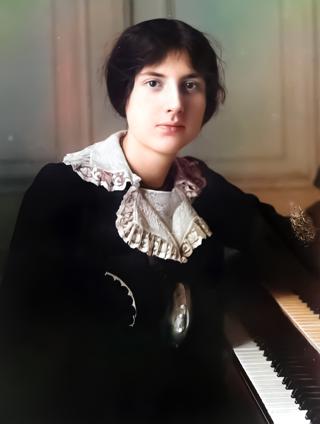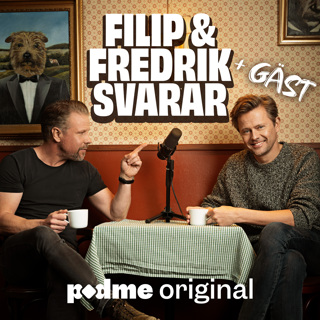
Shostakovich Symphony No. 10 LIVE w/ The Aalborg Symphony
Longtime listeners of Sticky Notes know that Shostakovich's 10 symphony was the inaugural piece covered on the show. It's been 8 years(!) since that show, so I've totally re-written the episode and had the privilege of presenting this new version live with the Aalborg Symphony Orchestra last week in Aalborg. Shostakovich, like so many composers before him, was obsessed with musical codes and messages, with songs that expressed two or more meanings, with ideas that were at once black and white and profoundly complex. This also describes Shostakovich himself, a man who was incredibly guarded with his public persona, and even his private persona as well. It is impossible to know anything for sure with Shostakovich, and to me therein lies the greatest strength of his music. The 10th symphony has been described as a portrayal of the Stalin years, as a portrayal of obsessive love, as a requiem, as sarcastic, as humorous, as agonizing, as triumphant, as, as, as….and the truth is that like all of the greatest works of Western Classical music, it is all of those things and so much more. It is a work of profound intensity, grabbing you from the start and not letting go for nearly 50 minutes, which makes sense considering that the piece was written in the shadow of another momentous event, the death of Joseph Stalin. There are very few experiences like hearing Shostakovich's 10th symphony live, and it is the kind of piece that, by the end of it, leaves you a slightly different person than you were when it started. Today on the show, we're going to be talking about a wide range of topics, from orchestral color to Joseph Stalin, from symphonic form to obsessive love, and much more. Join us!
27 Okt 59min

Barber Violin Concerto
There are so many great apocryphal stories in the long history of classical music, from the reason Tchaikovsky wrote his Sixth Symphony to what famous composers supposedly said on their deathbeds, to my favorite story: how Joseph Haydn's Symphony No. 96, The Miracle, got its name. Apparently, during the premiere of the symphony, a chandelier fell, but miraculously didn't hit anyone. Hence, The Miracle Symphony. The chandelier did, in fact, fall, but we now know it happened during the premiere of Haydn's Symphony No. 102, which has no nickname. Coincidentally, or perhaps not so coincidentally, the 96th Symphony is performed far more often than the 102nd, likely because of its nickname, even though it's the nickname of the wrong symphony. The Barber Violin Concerto has a great and true story behind it. But before certain information was revealed in 2010, the story everyone knew was quite different. The original version goes like this: Barber had completed the first two movements of his Violin Concerto and sent them to the soloist scheduled to premiere the work, Iso Briselli. Briselli didn't like the concerto, claiming it wasn't virtuosic enough, and asked Barber to write something more difficult. Barber, perhaps with an evil laugh, obliged and returned with the third movement. When Briselli received it, he realized he couldn't play it because of its extreme difficulty and ultimately withdrew from the premiere, which instead went to violinist Albert Spalding. It's a perfect "Icarus flying too close to the sun" kind of classical music story, but as it turns out, it isn't the full story. In 2010, letters were released between Barber, Briselli, and the real instigator in this little operetta, Briselli's violin teacher, Albert Meiff. I'll get into the whole story later, but it's a good one, even if it's not quite as cinematic as the legend. More important than the dispute over its last movement is the remarkable beauty and creativity of this masterful 20th-century concerto. Barber's Violin Concerto is one of my favorite pieces to play and to conduct, and it has charmed audiences ever since its premiere. It features Americana music of a kind only Copland could equal, as well as a heartbreaking oboe solo that might be one of the greatest moments in the history of American classical music. And then there's that pesky third movement, a challenge to every violinist (and orchestra) and a movement that remains controversial for many reasons.
9 Okt 47min

100 Years of Beethoven's Eroica (recordings)
One of my favorite things about having Patreon sponsors is that they often suggest the most fascinating pieces and topics for shows. Adrian, who sponsored a show last year, gave me one of my favorite prompts when he suggested looking at works based on literature. Now he's sponsored another episode, this time with an equally compelling idea that I was eager to explore right away. His prompt was: "The evolution of conducting techniques throughout recorded history. How have innovations from great conductors changed how music is performed and understood?" As a conductor, the thought of diving into different recordings of a single piece naturally whets my appetite. But the real reason I was so excited about this episode is that interpretation is, in my view, wildly misunderstood. I've tried to tackle this idea in many different ways, in my episode about the sound of the violin with Soovin Kim and my dad, Donald Weilerstein; in my "What Does Music Mean?" episode; and even in "What Does a Conductor Really Do?" But I've never taken a single piece and focused solely on its interpretation, and on how that interpretation has changed over time. This gives us the chance to dig deeply into what makes an interpretation. So today, I'm going to share a set of recordings of one piece (and don't worry, I'll reveal which one in a moment). I'll talk about what sets them apart, both the obvious differences, like pitch and extremes of tempo, and the more subtle ones, like vibrato, phrasing, and other elements of performance that most listeners aren't trained to notice. So, let's do some exploring together, coming right up, on Sticky Notes.
25 Sep 55min

The Life and Music of Grazyna Bacewicz
The great Polish composer Witold Lutoslawski said this after the premature death of his contemporary Grazyna Bacewicz: "She was born with an incredible wealth of musical talent, which she succeeded to bring to full flourish through an almost fanatical zeal and unwavering faith in her mission. The intensity of her activities was so great that she managed, in a cruelly-shortened life, to give birth to such treasures that any composer of her stature with a considerably longer life span could only envy." Bacewicz is a name that is probably not that familiar to you, but during her lifetime she was an extremely popular composer in her native Poland and across Europe as well. In the United States, her music has been rarely performed, though this has started to shift thanks to a renewed interest in female composers of the past. This new look at Bacewicz has revealed an incredible wealth of music. Bacewicz was one of the most prolific composers of the 20th century, writing over 200 works during her short lifetime! Some call her style neo-classical, but the main thing that I hear in her music is a sharp originality that permeates her music and makes her compositions a thrill to listen to. The vitality, energy, and creativity that embodies Bacewicz's works will be the main part of the show today, as we'll go through a set of some of her most representative pieces, pieces that I hope will enter the standard repertoire of performers all over the world even more so than they already have. So join me today to explore the life and music of this unfamiliar but vital 20th century master!
6 Sep 57min

Sticky Notes meets You'll Hear It
I had such a wonderful time joining the jazz podcast You'll Hear It! We talked about the meeting of jazz and classical music, a topic I've explored before, but never in this much depth and never with so much input from jazz musicians and experts like Peter Martin and Adam Maness. We talk about great jazz and classical composers, but we also talk about the strange divide between jazz musicians and classical musicians, trying to break down the barriers that exist between purveyors of these wonderful genres of music. I hope you enjoyed this one as much as I did!
22 Aug 1h 10min
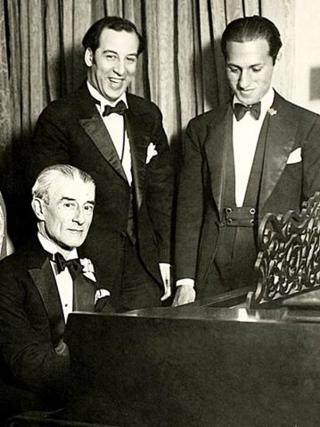
Impressions in Blue: Ravel & Gershwin
In the mid-1920s, Maurice Ravel wrote a letter to the legendary composition teacher Nadia Boulanger. Boulanger's class was a mecca for composers, both young and old, and musicians from all over the world vied to study with her. But Ravel's letter wasn't on his own behalf. Instead, he urged Boulanger to take on a young student whom Ravel himself had declined to teach. He wrote: "There is a musician here endowed with the most brilliant, most enchanting, and perhaps the most profound talent: George Gershwin. His worldwide success no longer satisfies him, for he is aiming higher. He knows that he lacks the technical means to achieve his goal. In teaching him those means, one might ruin his talent. Would you have the courage, which I wouldn't dare have, to undertake this awesome responsibility?" Boulanger also declined to take Gershwin as a student, fearing, like Ravel, that she might damage his spontaneity and dynamic jazz sensibility. Whether or not the famous story is true (that Ravel turned down Gershwin's request to study with him by saying, "Why be a second-rate Ravel when you are a first-rate Gershwin?") we may never know. But the two composers were friendly, and formed something of a mutual admiration society. Today, in this fourth collaboration with G. Henle Publishers in honor of their Ravel and Friends project, we're going to explore the connections between these two great composers: their friendship, their mutual influence, and the profound ways jazz infused itself into Ravel's music, particularly in his Violin Sonata and Piano Concerto in G. From the moment he discovered it, Ravel adored jazz, and like many French composers of the time, allowed its influence to permeate his work in ways both explicit and subtle. Join us!
7 Aug 44min
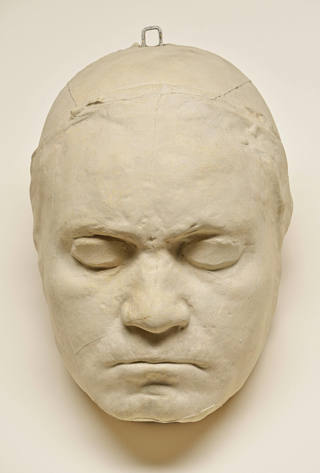
Beethoven Piano Sonata in B Flat Major, Op. 106, "Hammerklavier" - Part 2
There is a special category when it comes to Beethoven; a catalogue that doesn't include complete symphonies, sonatas, concerti, string quartets, etc., but just single movements. This is the catalogue of great Beethoven slow movements. Beethoven's slow movements are like a great Tolstoy novel. They span the gamut of human experience and also reach beyond it, into something we cannot understand but all somehow perceive. Simply put, Beethoven often seems to know us better than we know ourselves. This brings me to the slow movement of Beethoven's Hammerklavier Sonata. Unlike those late quartet slow movements, the slow movement of the Hammerklavier is not about ecstatic contemplation. Instead, it is a movement of pure and profound despair. It has been described as "a mausoleum of the collective suffering of the world," and "the apotheosis of pain, of that deep sorrow for which there is no remedy, and which finds expression not in passionate outpourings, but in the immeasurable stillness of utter woe." This is not a movement I would necessarily enter into lightly as you go about your day—it requires you to take a moment and enter a world unlike any other. Today, in Part 2 of this Patreon-sponsored exploration of this great, in all senses of the word, Sonata, we'll go through this slow movement in detail. Then we'll tackle the life-affirming and maddeningly complex last movement, which is not quite the antidote to the slow movement, but perhaps it is the only possible answer to the questions the third movement so profoundly asks. Join us!
24 Juli 53min
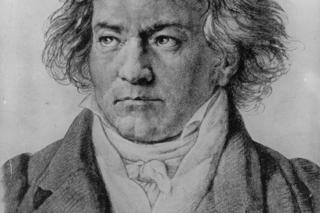
Beethoven Piano Sonata in B♭ major, Op. 106, "Hammerklavier" - Part 1
Beethoven once wrote to his publisher: "What is difficult, is also beautiful, good, great, and so forth. Hence everyone will realize that this is the most lavish praise that can be bestowed, since what is difficult makes one sweat." If this credo manifests itself most powerfully in any one of Beethoven's works, it might be the piece we'll talk about today, the piano Sonata Op. 106, nicknamed, "Hammerklavier." It is the longest Sonata Beethoven ever wrote, which essentially means that it was the longest sonata anyone had written up to that point. It marks one of the pivot points between Beethoven's so-called heroic period and his late period, where his music became even more cosmically beautiful than before. It is certainly his most ambitious Sonata to that point, and his most difficult. The scale of the Hammerklavier sonata is hard to describe; in around 45 minutes of music, Beethoven explores the full gamut of human emotion. The intensity, the difficulty, and the concentration that this sonata requires from the pianist and listener alike has led to many people, as the pianist Andras Schiff says, to "respect and revere this Sonata, but not love it." Most of the articles and analyses of this sonata that I found in researching this show emphasize its difficulty, its scale, its obsessiveness, and its impenetrability. But I must say that when I talk to musicians abut this piece, their eyes light up. Yes, this sonata is difficult, but what have we just learned from Beethoven? What is difficult is also beautiful, good, great and so forth. Join us as we begin a two part exploration of this remarkable work together. Thank you to Jerry for sponsoring this show on Patreon! Recording: https://youtu.be/yBtJF_4msqw?si=bIznKSGuRyXDbFaT
10 Juli 44min
